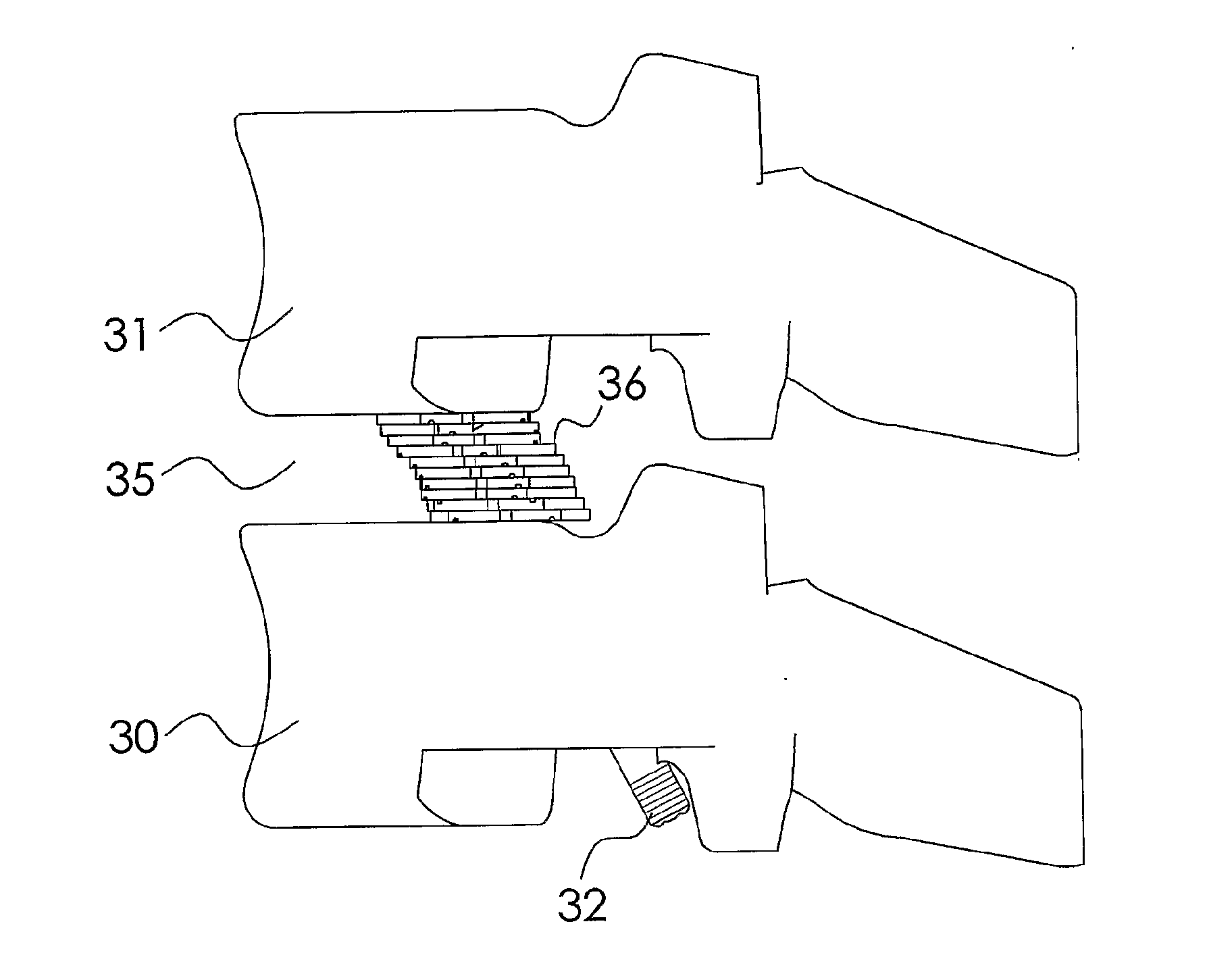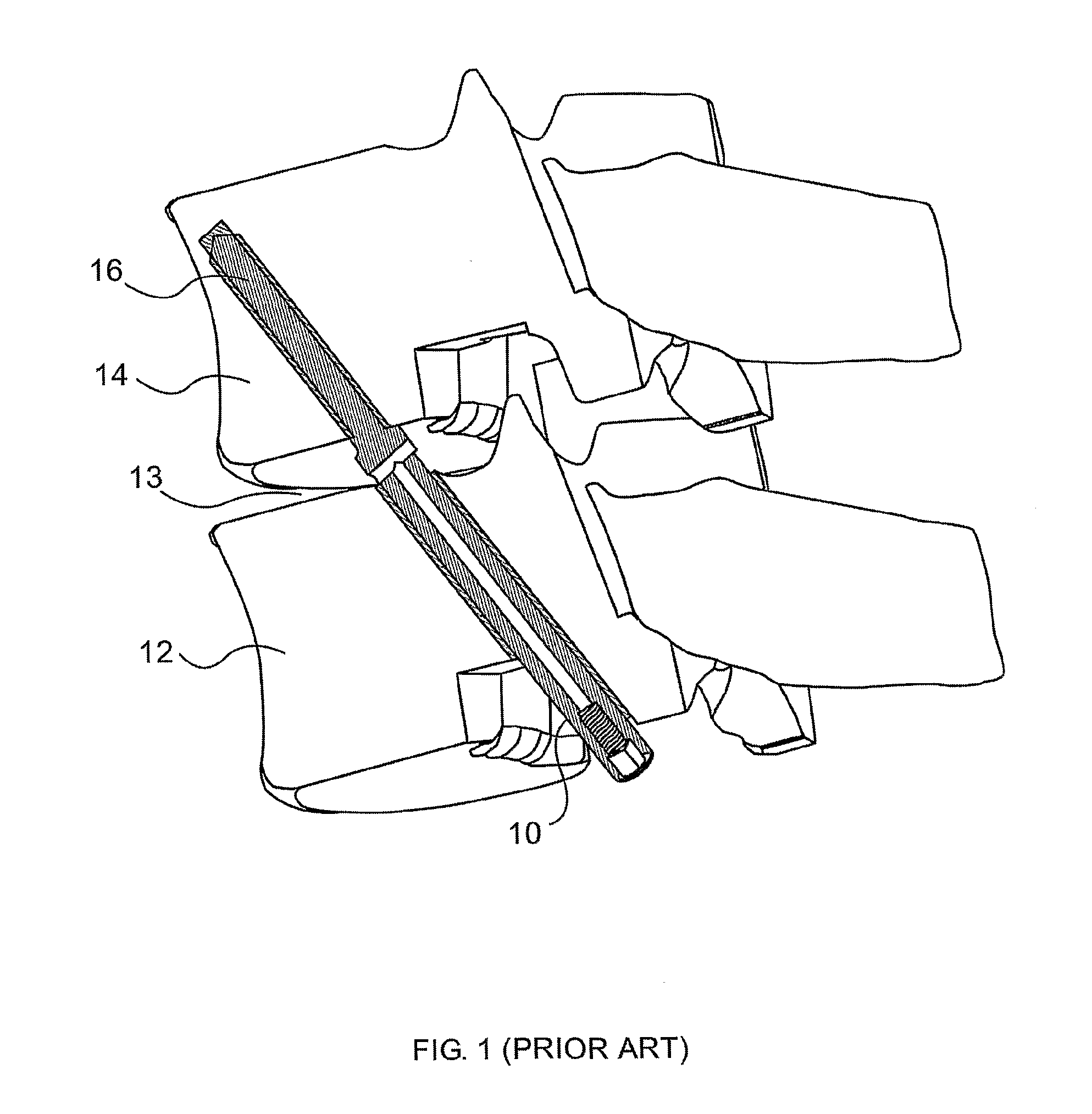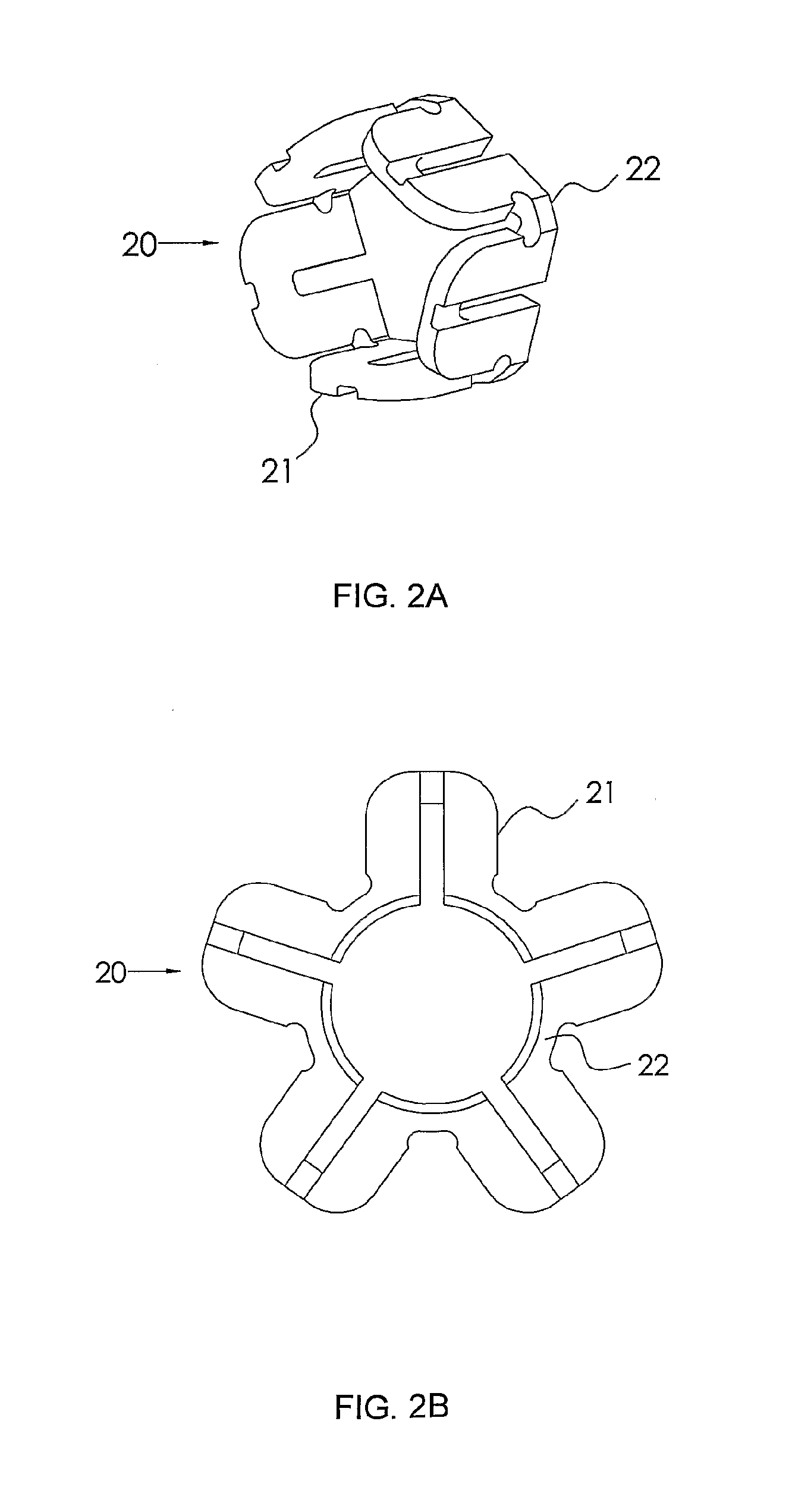Segmented insert for intervertebral support
a support and segment technology, applied in the field of support inserts, can solve the problems of no disc morselization and intervertebral bone growth promotion, and achieve the effect of facilitating outward bending
- Summary
- Abstract
- Description
- Claims
- Application Information
AI Technical Summary
Benefits of technology
Problems solved by technology
Method used
Image
Examples
Embodiment Construction
[0039]Reference is now made to FIGS. 2A and 2B, which illustrate schematically the two stages of an exemplary cylindrical segmental element 20, before and after deployment. FIG. 2A shows the element 20 with its leaves 21 folded, such that it can be inserted over the shank of the screw and through a hole drilled in the cortical bone of the pedicle of a vertebra. Once the leaves 21 protrude from the vertebra body into the disc space, they can expand into the disc space, making the segmental element almost flat and washer-like, and with a substantially larger diameter than that of the screw hole through which they were inserted. The element may be made of either a flexible or a rigid material. The leaves are connected by joints 22, which enable the leaves to rotate relative to each other around an axis parallel to their circumferential point of joining. The joints 22 can be either thinner or more flexible sections of the elements, or actual mechanical joints such as miniature revolute ...
PUM
 Login to View More
Login to View More Abstract
Description
Claims
Application Information
 Login to View More
Login to View More - R&D
- Intellectual Property
- Life Sciences
- Materials
- Tech Scout
- Unparalleled Data Quality
- Higher Quality Content
- 60% Fewer Hallucinations
Browse by: Latest US Patents, China's latest patents, Technical Efficacy Thesaurus, Application Domain, Technology Topic, Popular Technical Reports.
© 2025 PatSnap. All rights reserved.Legal|Privacy policy|Modern Slavery Act Transparency Statement|Sitemap|About US| Contact US: help@patsnap.com



